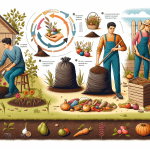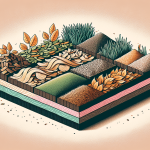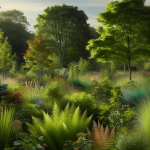This post may contain affiliate links. As an Amazon Associate, we may earn commissions from qualifying purchases.
Urban gardening may seem like a daunting task, but with a little creativity and determination, you can turn even the most concrete of jungles into a green oasis. Urban environments often come with challenges like pollution, heat islands, and limited space, which can make traditional gardening difficult. Pollution can contaminate soil and water, heat islands elevate temperatures, and tight spaces can limit the growth of larger plants. However, you can overcome these obstacles by using raised beds or containers, implementing vertical gardening techniques, and selecting plants that thrive in urban conditions. Using organic methods can also help mitigate the effects of pollution, while strategic placement and shade structures can tackle heat issues. By adapting to the unique challenges of urban environments, you can create a vibrant garden that not only beautifies your space but also contributes to your well-being and the health of your community. Have you ever wondered what it takes to garden in the concrete jungle? Urban environments present unique challenges for gardening, but these obstacles can indeed be overcome with some creativity and tenacity. Let’s dig into the effects of pollution, heat islands, and limited space on urban gardening and explore practical solutions for thriving gardens amidst city life.
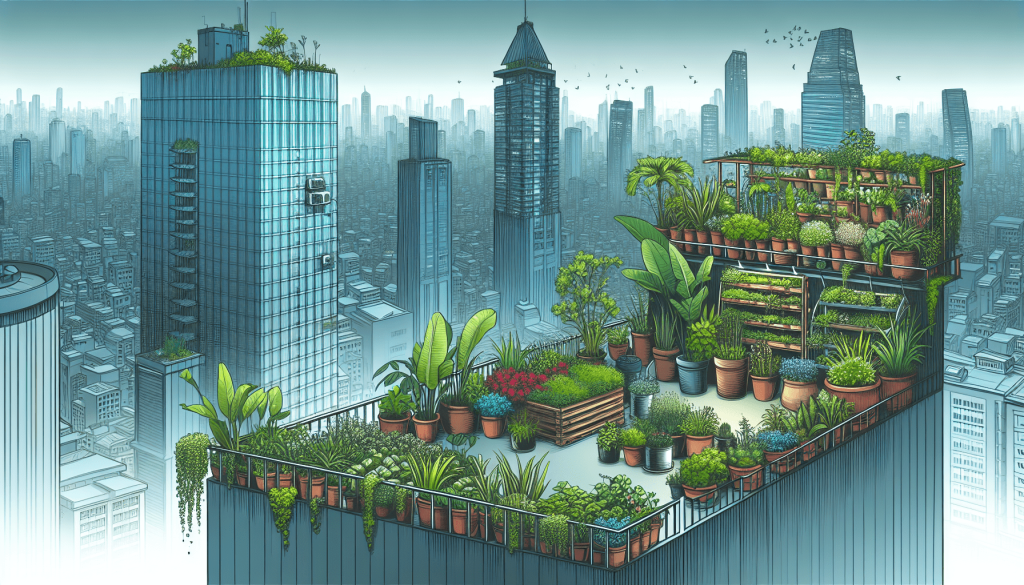
The Impact of Urban Environments on Gardening
When you think about urban gardening, you might imagine a bright oasis amidst the grey of the city. Yet, urban environments can significantly influence how you garden, from the quality of your soil to the health of your plants.
Pollution
Urban areas are often plagued by various pollutants, from car exhaust to industrial emissions. This pollution can affect the air quality and contaminate the soil where you plan to grow your plants.
- Air pollution: Pollutants like nitrogen dioxide (NO2) and sulfur dioxide (SO2) can damage plant tissues, affecting their growth and yield. It’s essential to consider the air quality when selecting your garden’s location.
- Soil contamination: Heavy metals like lead, cadmium, and arsenic often lurk in urban soils. These contaminants can be harmful to both plants and humans. Testing your soil before planting is crucial to ensure a safe and productive garden.
Heat Islands
Cities are known for their “heat islands,” where urban areas are significantly warmer than their rural surroundings. This phenomenon arises from human activities and the prevalence of heat-absorbing materials like concrete and asphalt.
- Higher temperatures: Elevated temperatures can stress plants, leading to wilting and reduced growth. Plants may also require more frequent watering to cope with the heat.
- Extended growing seasons: On the flip side, the warmth of heat islands can extend the growing season, allowing you to cultivate certain plants longer than you would in cooler rural areas.
Limited Space
One of the most apparent challenges of urban gardening is the lack of space. With buildings, roads, and sidewalks taking up most of the land, you need to get creative with how and where you plant.
- Vertical gardening: Utilizing walls, fences, and trellises can help you maximize space. Vertical gardening can also create a beautiful green backdrop in an urban setting.
- Container gardening: Pots, planters, and raised beds can be placed on balconies, rooftops, and small yards, offering flexibility and mobility for your garden projects.
Overcoming Challenges of Urban Gardening
With a bit of ingenuity, you can turn these urban challenges into opportunities for innovative and sustainable gardening.
Improving Air Quality
To tackle air pollution, consider incorporating plants that are more resistant to pollutants and even help clean the air.
- Plants like spider plants, peace lilies, and Boston ferns can absorb toxic substances and improve indoor and outdoor air quality.
- Using a water feature or misting system can also help capture airborne particles, reducing pollution around your plants.
Testing and Amending Soil
Soil contamination is a critical concern in urban gardening, but testing and amending your soil can make a significant difference.
- Test Your Soil:
- Use a soil testing kit or send a sample to a local agricultural extension office to check for heavy metals and pH levels.
- Amend Your Soil:
- If contaminants are found, consider raised beds or container gardening with fresh, contaminant-free soil.
- Add organic matter, like compost, to improve soil structure and fertility.
Mitigating Heat Island Effects
Combat the heat island effect by providing shade and retaining moisture around your garden.
- Shade Solutions: Use shade cloths, pergolas, or strategically placed umbrellas to protect plants from intense sunlight.
- Moisture Retention: Mulch can help retain soil moisture and keep roots cool. Additionally, watering in the early morning or late evening reduces evaporation.
Maximizing Limited Space
Creativity is your best tool when dealing with limited space. Here are a few ideas to keep your urban garden flourishing:
- Vertical Gardens: Install trellises, wall-mounted planters, or hanging baskets to utilize vertical space.
- Container Gardening: Select containers suitable for your plants’ root systems and ensure they have proper drainage. Containers can be moved to capture the best light and protect plants from adverse weather.
- Community Gardens: If personal space is too limited, check for local community gardens where you can rent a plot and garden alongside fellow enthusiasts.
Practical Tips and Techniques for Urban Gardeners
Now that we’ve highlighted the challenges, let’s dive into some practical tips and techniques to turn your urban gardening dreams into reality:
Choosing the Right Plants
Selecting plants that thrive in your specific urban conditions is key. Consider factors like light availability, temperature, and space when making your choices.
- Edible Plants: Herbs (basil, parsley, and mint), leafy greens (lettuce, kale, and spinach), and compact fruiting plants (cherry tomatoes, strawberries) are excellent choices for urban gardens.
- Ornamental Plants: Succulents, annuals, and dwarf shrubs can add beauty without taking up too much space.
Efficient Watering Systems
Watering your urban garden efficiently ensures your plants stay hydrated without wasting water.
- Drip Irrigation: This system delivers water directly to the roots, minimizing evaporation and runoff.
- Self-Watering Containers: These containers have built-in reservoirs that provide a consistent water supply, reducing the frequency of watering.
- Rainwater Harvesting: Collect and store rainwater to use in your garden, promoting sustainability and reducing reliance on municipal water supplies.
Sustainable Practices
Adopting sustainable practices can make your urban garden more resilient and environmentally friendly.
- Composting: Turn kitchen scraps and garden waste into rich compost to feed your plants and improve soil health.
- Organic Gardening: Avoid synthetic fertilizers and pesticides, opting for natural alternatives like neem oil, insecticidal soap, and compost tea.
- Companion Planting: Planting certain species together can repel pests, attract beneficial insects, and boost growth naturally.
Creating a Microclimate
In urban settings, creating a microclimate can protect your plants and extend the growing season.
- Windbreaks: Tall plants, fences, or screens can act as windbreaks, reducing wind stress on your garden.
- Sun Traps: Position containers or raised beds in sunny spots to create warmer microclimates for heat-loving plants.
- Cold Frames: Extend the growing season by using cold frames to protect plants from frost and cooler temperatures.
Community and Social Aspects of Urban Gardening
Urban gardening is not only about growing plants; it’s also about fostering a sense of community and improving social well-being.
Community Gardens
Community gardens offer a shared space for urban dwellers to grow their own food and ornamental plants. These gardens can strengthen community bonds and provide educational opportunities.
- Benefits: Improved mental health, increased access to fresh produce, and the opportunity to learn and share gardening knowledge.
- Starting a Community Garden: Collaborate with local organizations, secure suitable land, and engage community members to participate and maintain the garden.
Urban Farming Initiatives
Urban farming takes gardening to the next level by promoting larger-scale food production within city limits. These initiatives can involve rooftop farms, vertical farms, and hydroponic systems.
- Advantages: Increased access to local produce, reduced carbon footprint from food transport, and job creation within urban areas.
- Getting Involved: Support urban farming projects through volunteering, purchasing locally-grown food, or advocating for urban agriculture policies.
Green Spaces and Well-Being
Urban green spaces, including parks, rooftop gardens, and green walls, contribute to the overall well-being of city residents by providing places for relaxation, recreation, and connection with nature.
- Environmental Benefits: Improved air quality, reduced urban heat island effect, and increased biodiversity.
- Mental Health Benefits: Reduced stress, enhanced mood, and improved cognitive function through exposure to green spaces.
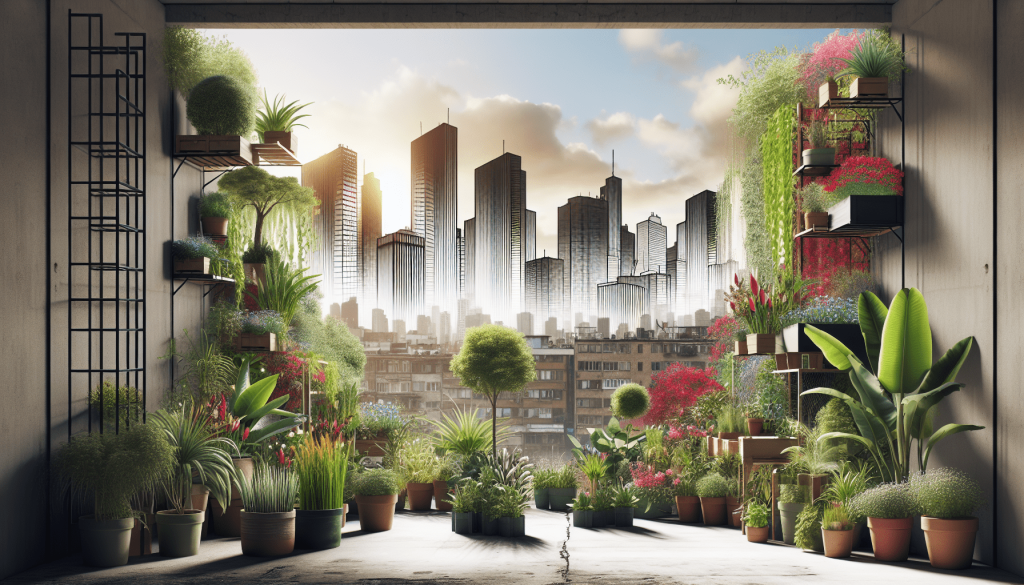
Conclusion
Urban gardening presents unique challenges, but these can be met with creativity, community support, and sustainable practices. By addressing issues related to pollution, heat islands, and limited space, you can transform urban environments into flourishing green spaces. This not only benefits your well-being but also contributes to a healthier, more resilient urban ecosystem. So, roll up your sleeves, gather your tools, and let’s grow something beautiful in the heart of the city!

